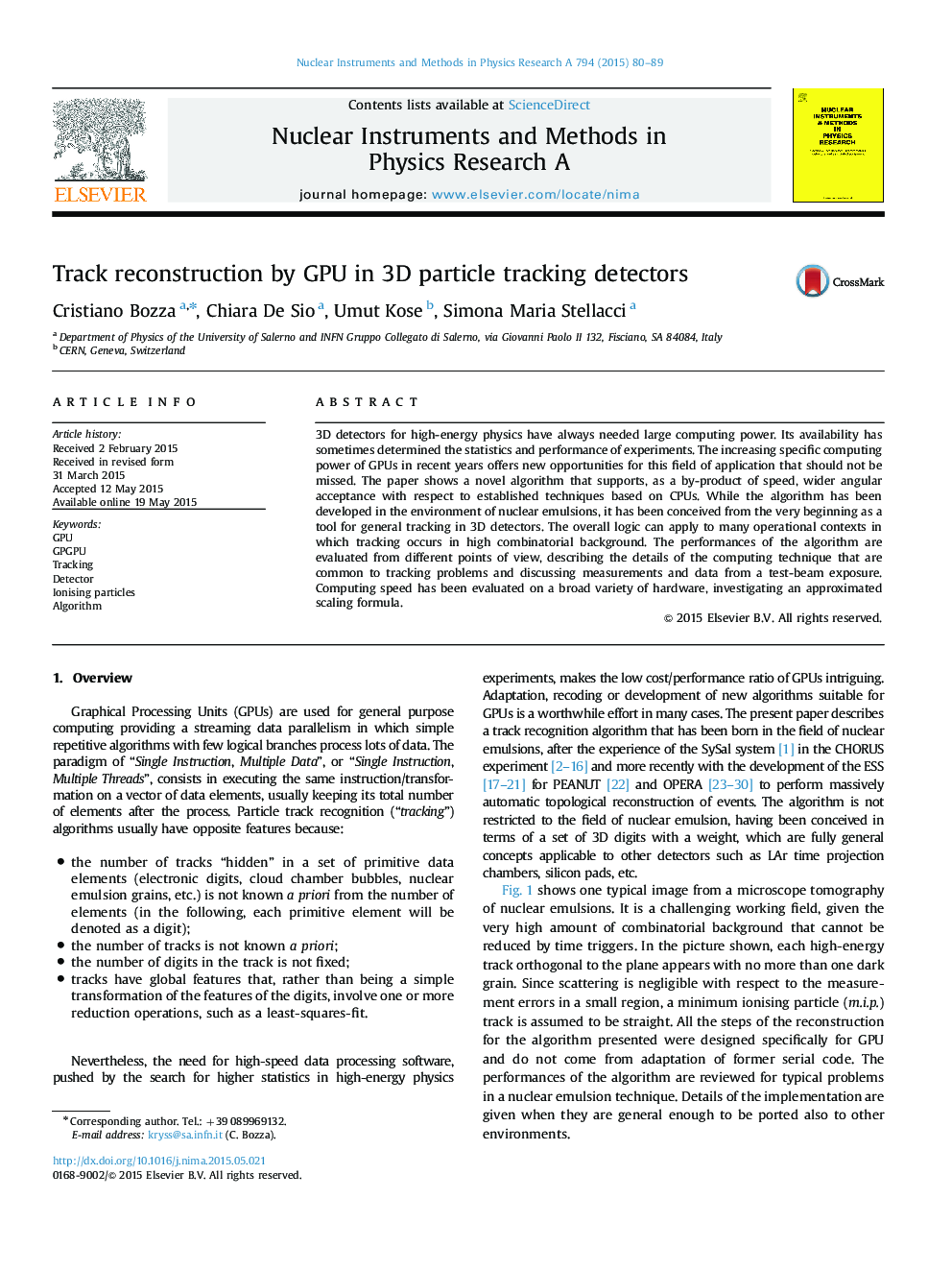| Article ID | Journal | Published Year | Pages | File Type |
|---|---|---|---|---|
| 8172509 | Nuclear Instruments and Methods in Physics Research Section A: Accelerators, Spectrometers, Detectors and Associated Equipment | 2015 | 10 Pages |
Abstract
3D detectors for high-energy physics have always needed large computing power. Its availability has sometimes determined the statistics and performance of experiments. The increasing specific computing power of GPUs in recent years offers new opportunities for this field of application that should not be missed. The paper shows a novel algorithm that supports, as a by-product of speed, wider angular acceptance with respect to established techniques based on CPUs. While the algorithm has been developed in the environment of nuclear emulsions, it has been conceived from the very beginning as a tool for general tracking in 3D detectors. The overall logic can apply to many operational contexts in which tracking occurs in high combinatorial background. The performances of the algorithm are evaluated from different points of view, describing the details of the computing technique that are common to tracking problems and discussing measurements and data from a test-beam exposure. Computing speed has been evaluated on a broad variety of hardware, investigating an approximated scaling formula.
Related Topics
Physical Sciences and Engineering
Physics and Astronomy
Instrumentation
Authors
Cristiano Bozza, Chiara De Sio, Umut Kose, Simona Maria Stellacci,
